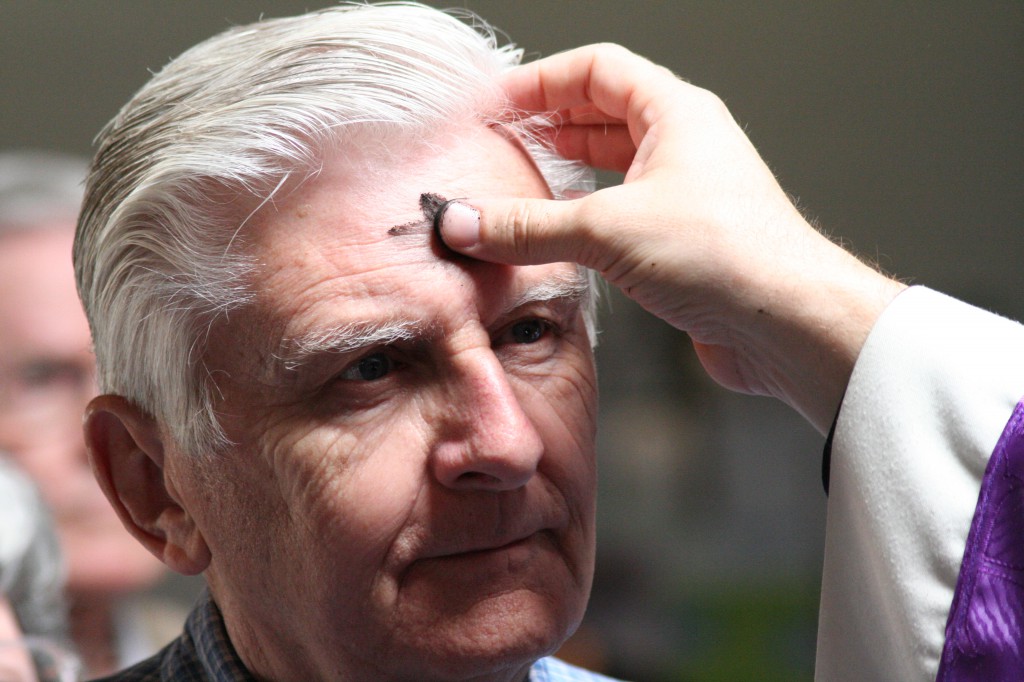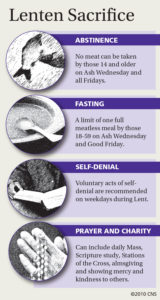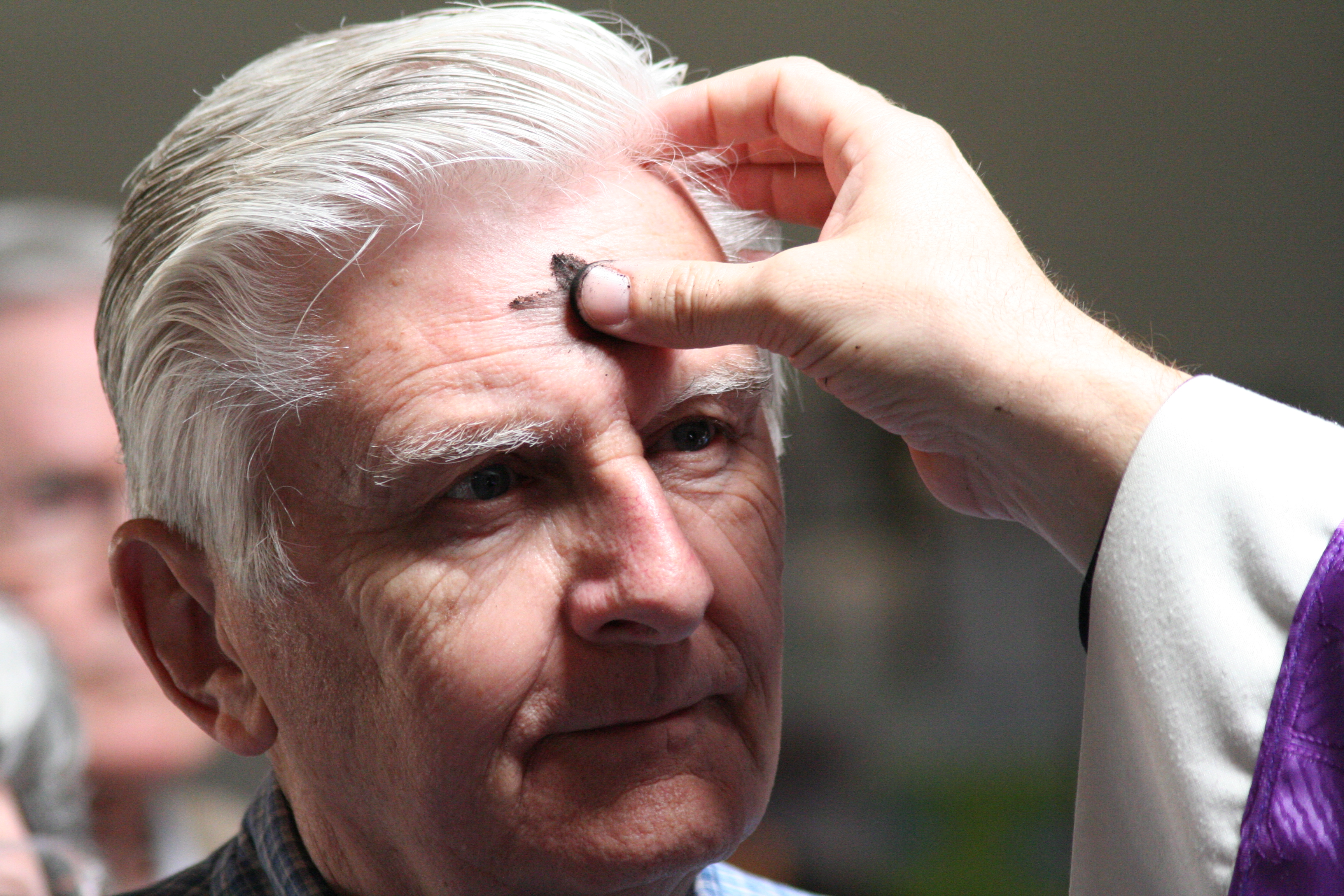
The worldwide Church is about to embark on its annual 40-day retreat. The season of Lent, with its ashes, palms and purple vestments intermingled with sacred Scripture, begins March 5.
The official title for Lent, Quadragesima, is Latin for “forty.”
In preparation of the holy season, faithful pilgrims are marked with the greatest known Christian symbol in the world — the cross.
Using blessed ashes from burned palms, the cross is traced on the forehead on Ash Wednesday, symbolizing repentance.

“The darkness of the ashes upon our foreheads naturally reminds us that the fragile, earthy ‘clay vessel’ of our body will return to dust,” said Deacon Thomas Phelan of Queen of Peace Parish in Mesa. “At one point this outer stuff of our person will not mean very much, so we are led to say to ourselves, ‘let’s look at who this inner person is becoming. Is our depth of faith, hope and self-giving love all that Christ wants it to be?’”
Lent lasts for 40 days — excluding Sundays — from Ash Wednesday to the evening Mass of the Lord’s Supper on Holy Thursday, which this year falls on April 17. It is a reminder of Christ’s 40 days of temptation and fasting in the desert, and of Israel’s 40 years of wandering in the desert.
This penitential season of fasting, almsgiving and special prayer is like a spiritual cleansing and renewal to draw closer to God.
For Catholics, it is an annual journey toward the great feast of Easter, the celebration of Christianity’s most fundamental belief that Jesus was raised from the dead and is the Lord of all.
Although the universal Church takes a more solemn tone, Christians are called to be joyful.
“It’s important to talk about our attitude,” said Fr. Steve Kunkel, pastor of Christ the King Parish in Mesa. “If we approach it like a depressing ordeal of suffering and starving, then we set ourselves up for failure.”
Lent is anything but gloomy. Instead, it’s a time for love and a journey to the fulfillment of hope.
Originally, Lent was a period of instruction just for catechumens who prepared to enter the Church at Easter, but it has evolved into a season celebrated by the entire Church.
Lent can be transformative if seen through the lens of love, and it’s through sacrifice that Lent becomes real.
“If I were to ask God what was the biggest thing Jesus was pushing, it’s the kingdom,” said Fr. Doug Lorig, pastor of St. Maria Goretti Parish in Scottsdale. “If that was Jesus’ principal purpose, to introduce the kingdom and call people to enter it, how do you live in the kingdom and open your heart wider?”
The three pillars of Lent — prayer, fasting and almsgiving — are examples of opening our heart by directing focus and attention on God and others.
“Each of those are our love language for God,” Fr. Kunkel said. “There’s a difference between a burden and a cross. A burden is something we do without understanding how it connects with God, a person or the Church. A cross is the greatest symbol of love with, and for, Christ.”
Fr. Kunkel said spending time praying the rosary or a chaplet demonstrates a desire to love and to know God; fasting, in a spiritual way, tells God, “I love You more than then chocolate, or whatever food it may be.”
Almsgiving, or charity, shows God we love Him through the person being shown charity.
“When we look at Lent, it’s our love affair with God,” Fr. Kunkel said. “We gladly do these things to show our love and our willingness to spend time with Him.”
This includes adhering to the Lenten fasting/abstinence parameters. Catholics ages 14 and older are to abstain from eating meat on Ash Wednesday and all the Fridays of Lent.
Additionally, all Catholics who are 18 and older, until their 59th birthday, are to fast on Ash Wednesday and Good Friday by eating, at most, only one full meal and two smaller ones.
“If everything flows around God and the good of neighbor, then it widens our heart for the kingdom to make a bigger impact in our life,” Fr. Lorig said.
Recognizing the three Lenten pillars’ link to baptismal renewal just may be the key to a fruitful observance.
Catholics are not just called to abstain from sin, but to a true conversion of their hearts and minds as Christ’s followers.
The faithful recall the water where they are baptized into Christ’s death, die to sin and begin a new life in Christ.
“The life of Christ provides an example for us, but it is His death that atones for sins, and His resurrection that brings us the hope of eternal life,” said Ryan Ayala, youth ministry director at Our Lady of Perpetual Help Parish in Glendale.






